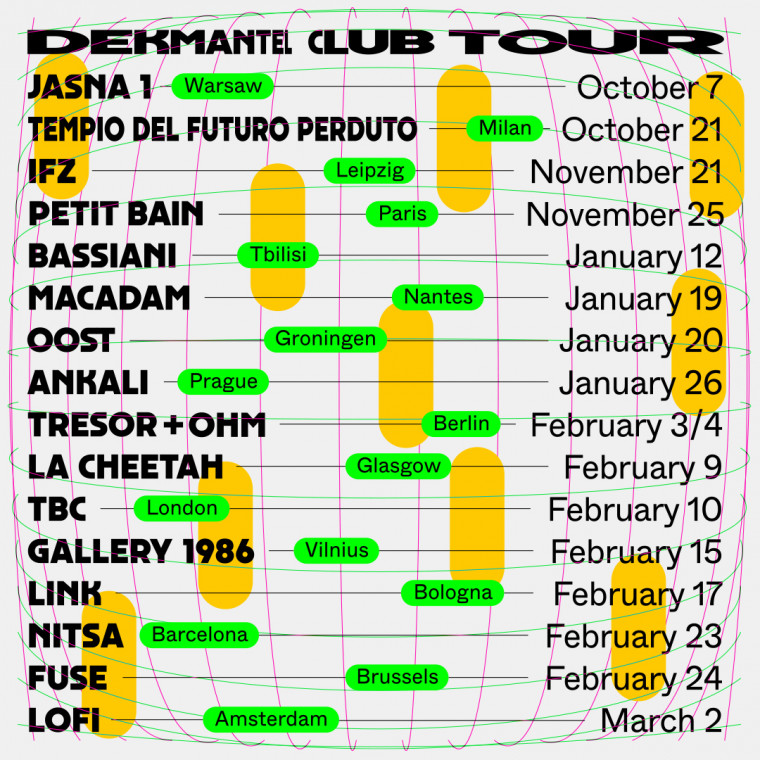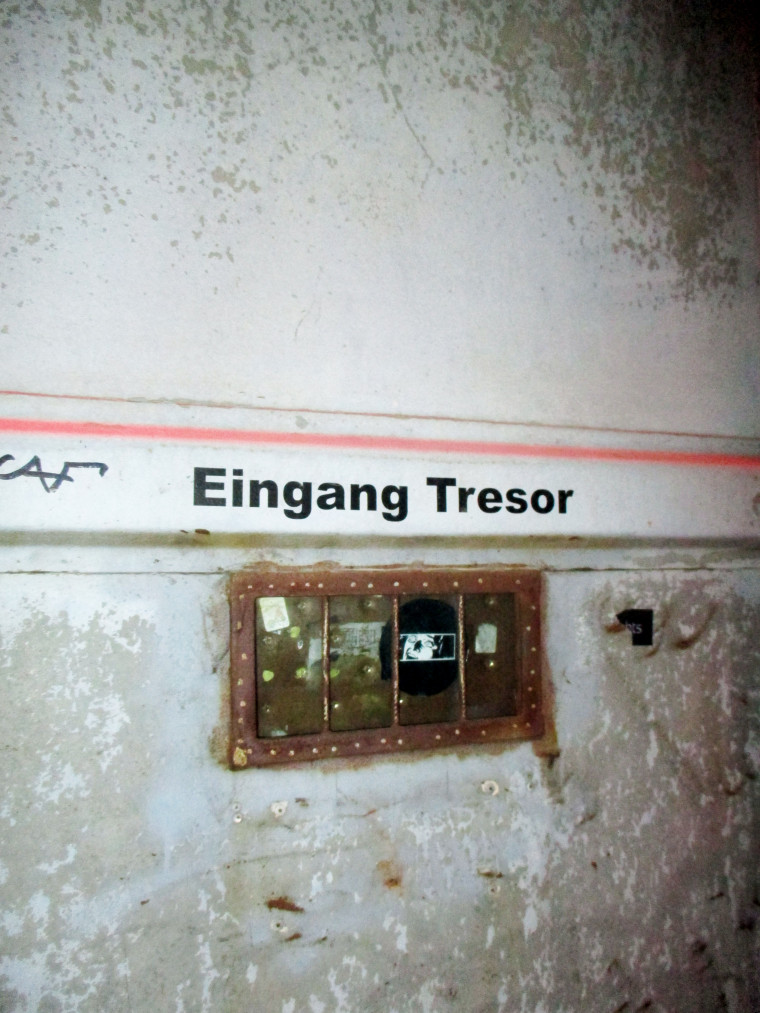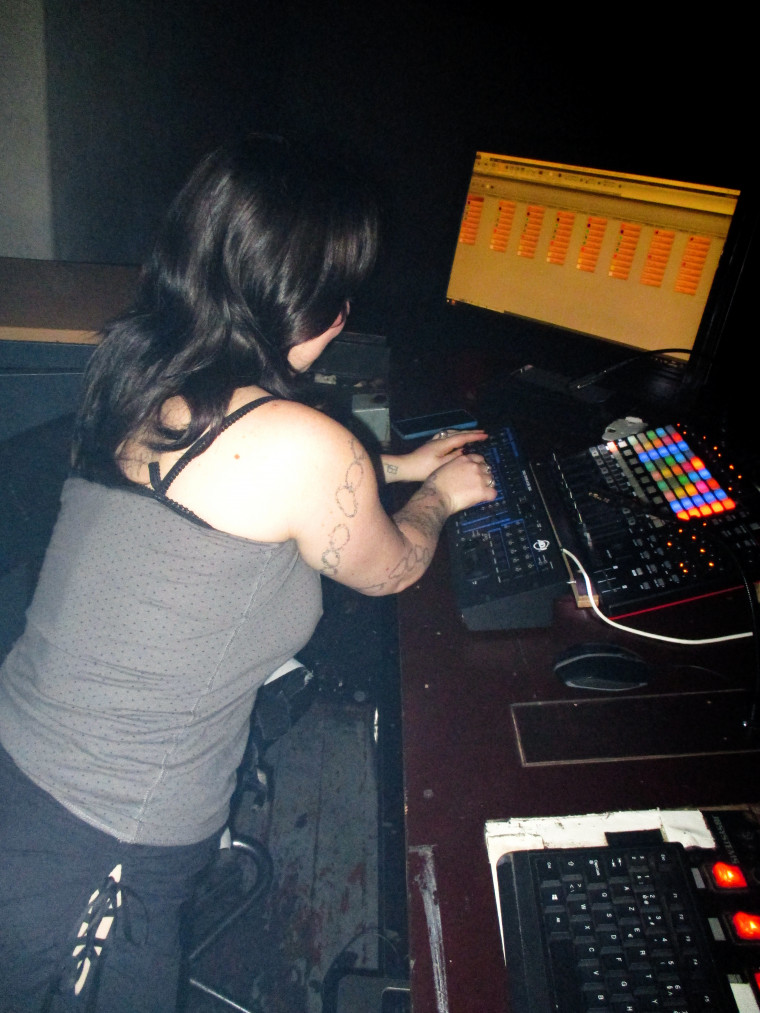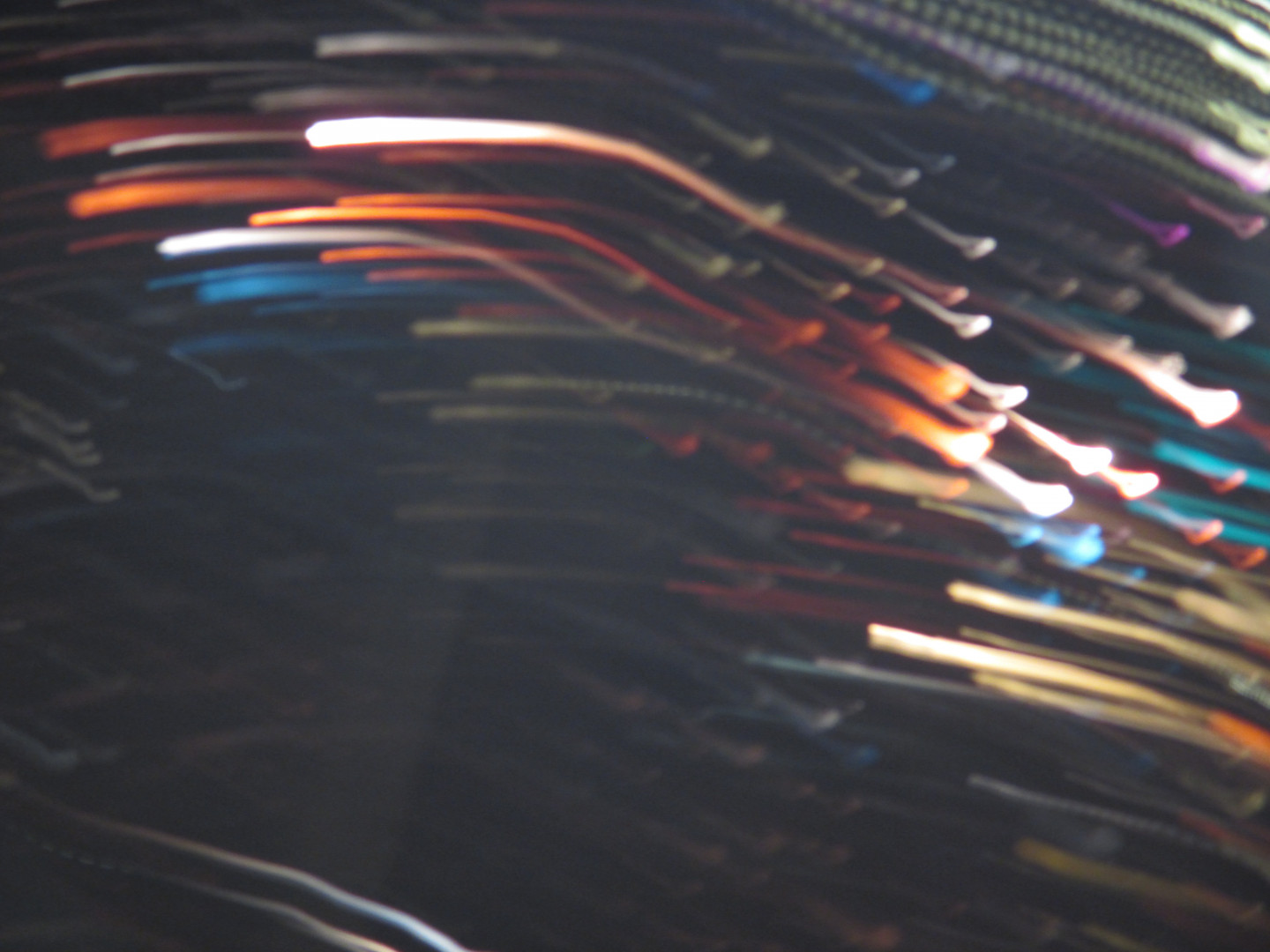The best clubs serve many purposes. They are gathering places for the like-minded, acting as artistic community centres and microcosmic music utopias alike. These venues are also living organisms, constantly adapting to ongoing socio-political changes, and cultural developments in the dance music industry.
Words by Jaša Bužinel
Photography by Ted Grindei & Evi Cats
Between late 2023 and early 2024, the Dekmantel Club Tour touched down in sixteen European venues that are essential to the continent’s electronic music scenes. “Festivals wouldn't exist without clubs,” shares Dekmantel music programmer Elisa Luengo. ”Being able to build bridges with other scenes is a very fulfilling experience. It gives meaning and context to what we do. Connecting to other like-minded crews, and getting to know what's happening in their cities, gave me a better understanding of the bigger picture, while at the same time zooming in on the specifics.”
The importance of small and mid-size venues in the wider context of electronic music culture cannot be overstated. A 200-person club can be as vital as a 5000-capacity venue. This is even truer in today’s climate, faced with a rapidly declining number of active clubs and grassroots spaces throughout Europe. So much talent is given a chance to bloom inside these walls, and so many life-affirming encounters, personal epiphanies, and artistic discoveries regularly take place.

As audiences who are coming-of-age discover clubbing following the pandemic, venues must continually cater to new ears. These considerations are not only about fluctuations in taste. Promoters navigate financial instability, national politics, local municipalities, neighbouring communities, and other parties if they wish to make ends meet. DJs have risen in popularity around these trends, particularly the harder fast-paced sounds associated with younger Gen Z clubgoers. Social media stats and streaming numbers continue to carry increasing weight with booking agents, especially at large festivals and superclubs.
“I think that the biggest shift to clubbing today has been dictated by how we consume information,” explains Venue MOT’s Kit Seymour. “We are ultimately at the mercy of the various algorithmic processes in our digital landscapes. The consequences of this have been wide-ranging, and well-documented, particularly with regard to how artists navigate self-promotion. But, it has also had an effect on event promotion. We’ve witnessed a consolidation of power of sorts by certain promoters or venues, and this is due in part to their retention of large amounts of data, as views generally equal sales.”
“A venue like MOT was traditionally able to operate solely on localised events. However, this kind of organic engagement has appeared increasingly difficult to foster in recent years. This is no more clear in the fact that paid advertising for shows has gone from the exception to the norm for events at every level.”
"Being able to build bridges with other scenes is a very fulfilling experience. It gives meaning and context to what we do." - Elisa Luengo (Dekmantel)
So have these changes in club goers’ habits and the social media impacted the way smaller venues approach bookings and curation? “We've noticed a clear decline in interest in groove music and, more particularly, house music in France, and on the other hand a rise in very fast and hard music,” replies Anaëlle Saas, the music programmer from Nantes’ Macadam. “In spite of this, we try to maintain an aesthetic diversity while giving space to styles related to rave, trance, techno and progressive as well as offering highlights of bass, breaks and UK music.”
Dutch club OOST has unique concerns due to its relatively remote location in the city of Groningen, but it is experiencing similarities with Europe’s broader trends. “I can only talk about it in a hyper-localised way. Groningen is a specific case with its own ecosystem, removed from other places in the Netherlands,” explains Kos Van Erp.
“The audience is always in flux, with people only sticking around for a couple of years before moving on. Post-pandemic, the crowd had a super eclectic, varied music taste. At the moment, it seems that most are back to demanding a certain groove or stability during a night, compared to the extremely dynamic, high-energy moods of 2022 and 2023.”


Europe’s club scene has somewhat recovered following the decimation of the nightlife industry during the Covid-19 pandemic, but the landscape in 2024 is far from rosy. Promoters must navigate ongoing hurdles, particularly due to inflation and the increased cost-of-living. Artists fees, production expenses, and prices on everything from utilities to drinks have soared, alongside huge rent hikes.
Occasionally, you will hear of venues opening––such as Open Ground (Wuppertal), DNA (Munich), UMI (Brussels) and Karmakoma (Belgrade). Updates about clubs closing down have become far more common. During 2023, we witnessed the shuttering of De School (Amsterdam), Astron Bar (Athens), Fundbureau (Hamburg) and Waagenbau (Hamburg) and Re:mise (Berlin), to name only a few.
"I think that the biggest shift to clubbing today has been dictated by how we consume information" - Kit Seymour (Venue MOT)
UK club land has not fared much better. According to a recent Night Time Industries Association [NTIA] report, 396 venues – 32% of percent of UK clubs – have shut down since the start of the pandemic. British clubs that remain have seen a 9% decrease in visits, which has been attributed to the rise in the cost of living, the decrease in midweek parties, and fewer late nights during the weekend. Still, club culture is nothing if not resilient and resourceful.
Behind every successful venue, there is an adaptable, hardworking team that is problem-solving in every capacity, from finances to creative direction. Prague’s Ankali faces challenges that are being reflected globally: “The greatest issue for us is the struggle with finances due to higher costs, unstable income, and the overall volatile cash flow due to less predictable attendance. We are all overworked, and don’t have enough budget to hire extra help. Employees in the cultural sector have been heavily underpaid for ages in the Czech Republic. That’s what perhaps drives people away from this field more and more. It’s a precarious work environment and most people in the cultural sector have multiple jobs to sustain their life.”

“We’re seeing the economic recession hit young people, which influences their spending patterns,” adds OOST. “Going out is very expensive, and people tend to pick their moments. Weekly clubbing at a homebase with affordable entry fees seems less common. Instead, people save up, and spend big on large A/V experiences with equally high ticket prices once in a while. Luckily, the shift back might have already started, as more and more people seem vocally discontent with paying 50 euros a ticket for a single night.”
Similarly, UK DIY space Venue MOT’s booking strategy balances financial implications alongside a desire to nurture more experimental sounds. “London has always been a saturated market, but a decline in attendance since the pandemic has only increased competition across the city. This impacts the level of risk you feel comfortable taking, which informs a level of homogeneity. Despite this, we do our best to offer a point of difference in our programming. We have to be savvy in how we go about that in order to fill the club by coupling ‘ticket sellers’ with artists who we feel deserve a platform.”
"Going out is very expensive, and people tend to pick their moments. Weekly clubbing at a homebase with affordable entry fees seems less common." - Kos van Erp (OOST)
Venues have ongoing decisions when booking homegrown talent versus international artists. How do promoters navigate this? “From the very beginning, we wanted to run a club that’s based on and supports the local scene,” remarks Jedrzej Kowalczyk from Warsaw’s Jasna 1. “Polish electronic music has been going through a renaissance over the past few years. We want to promote and celebrate our artists, promoters, and collectives. Our resident DJs consider Jasna their home, and contribute to the club by taking an active part in selecting line-ups and developing the space. Our international image has been amplified by the global success of our residents, VTSS and Olivia.”
Rather than operating in a localised bubble, clubs are forming connections with like-minded venues in other countries who share their ethos. Jasna 1 continues, “We are part of Gravity Network – a cultural cooperation project between us (Jasna 1), Ankali (Prague), RSO (Berlin), Garage Noord (Amsterdam), and Mutant Radio (Tbilisi). Its aim is to increase the mobility of local artists, while setting up a sustainable cooperation between venues through artist and knowledge exchange. The collective also educates music communities, and the wider public, on important issues related to electronic music and club culture.”
For Macadam, a commitment to nurturing hometown talents has become increasingly important. “We were already promoting the local scenes and national scenes, but we've stepped up this dynamic to contribute even more to their growth. It is difficult to understand the excessiveness of increasing artist fees in certain situations today. We see it as a lack of respect for the electronic music scene. There's also the question surrounding the notoriety of artists. Are we paying for their talent, or their image?”
Spotlighting DJs in the surrounding communities is a matter of logistical necessity in OOST’s case. “Our focus lies heavily on locals. The average club night consists of one travelling act––often the headliner, someone who does something unique or pushes their respective genre forward in our eyes. The other two slots are for locals. If it’s a two-room club night, the second room will most likely be handed over to a collective that can do their thing there. Our audience doesn’t seem too sensitive to big names anyways, so we use that to our advantage by reserving plenty of spots for Groningen DJs.”
Experiences dealing with authorities and municipalities vary from country to country. When asked whether Polish officials interact with clubs and dance music culture favourably, the answer from Jasna 1 was resounding. “Not at all. But our government recently changed from the extreme rightwing to a more liberal party. I really hope that it will bring some positive change in the near future.”
In the Czech Republic, the situation is more of a grey area. “Favourable would be a strong word, but the city in general is quite tolerable,” according to Jasna 1. “Some clubs, including Ankali, Bike Jesus, and Fuchs2, receive various public funding, which is great. But, the nightlife policies of Prague could be better. The cultural departments see the value of club culture, but it feels like for the rest it’s just a niche subject––a matter of money or political influence.”
"It is difficult to understand the excessiveness of increasing artist fees in certain situations today. We see it as a lack of respect for the electronic music scene." - Anaëlle Saas (Macadam)
Elsewhere, Macadam has taken a hands-on approach to working with French authorities: “There are still a lot of preconceptions about club culture, and there is still a lot to be done to destigmatize our venues and audiences in the eyes of non-dancers and certain institutions. That's why Macadam has worked to establish a dialogue with the various representatives of the city of Nantes on nightlife issues, cohabitation with local residents and the question of prevention.
Apart from programming, consumer habits, and global finances, and selling tickets are closely tied to promotional strategies, and therefore visual identities. Clubs are consistently exploring new ways to attract club goers, and build their presence on social media. Unsurprisingly, approaches to visuals vary – from the hyper-stylised to simple DIY artwork.
“It’s the most instantaneous translation of the aesthetic we stand for. It communicates a rough idea within milliseconds,” shares OOST. “Our trusted art director, Tim Tijink, has created a visual identity that was designed with collaboration in mind – to be able to incorporate the works of local, national or international visual artists in our monthly program flyer, and for specific event artworks.”
Ankali has made its visual representation a key facet of the club; its Times New Roman flyers with distinct artwork commissions are instantly recognisable. “We wanted to have an identity which is unified yet somehow very variable, while always having the possibility to rethink how we work with it. It also allows us to reflect our musical direction, which is diverse and also, slowly but constantly, changing.”


Macadam continues, “Because of our strict ‘no photo policy’, we attach great importance to the club’s visual identity. It’s a powerful vector for our overall artistic direction. We work with numerous artists from different backgrounds, using a wide range of techniques including photography, 3D, painting, drawing, and motion. We also create a great deal of artistic content ourselves, for example photos, videos, and other digital content. We use it to promote our events, but also simply to evoke the atmosphere of the club without ever showing the inside. Our approach is to suggest without divulging.”
No matter the artistic direction, preservation of these electronic music spaces is vital. “Clubs with commitment towards a specific vision are always vulnerable beings.” adds Dekmantel. “They operate within tight margins, and in ever-changing environments, normally with little institutional support. They have to survive regulations, inflation, trends... It's not an easy task. Keeping them alive is the shared responsibility of everyone who cares.”
